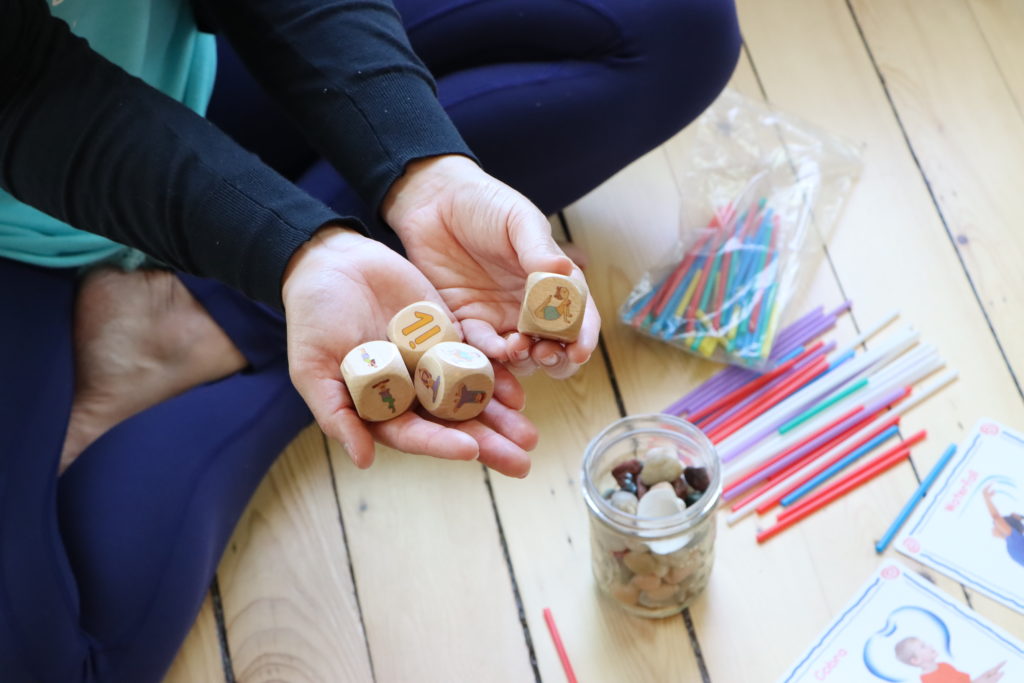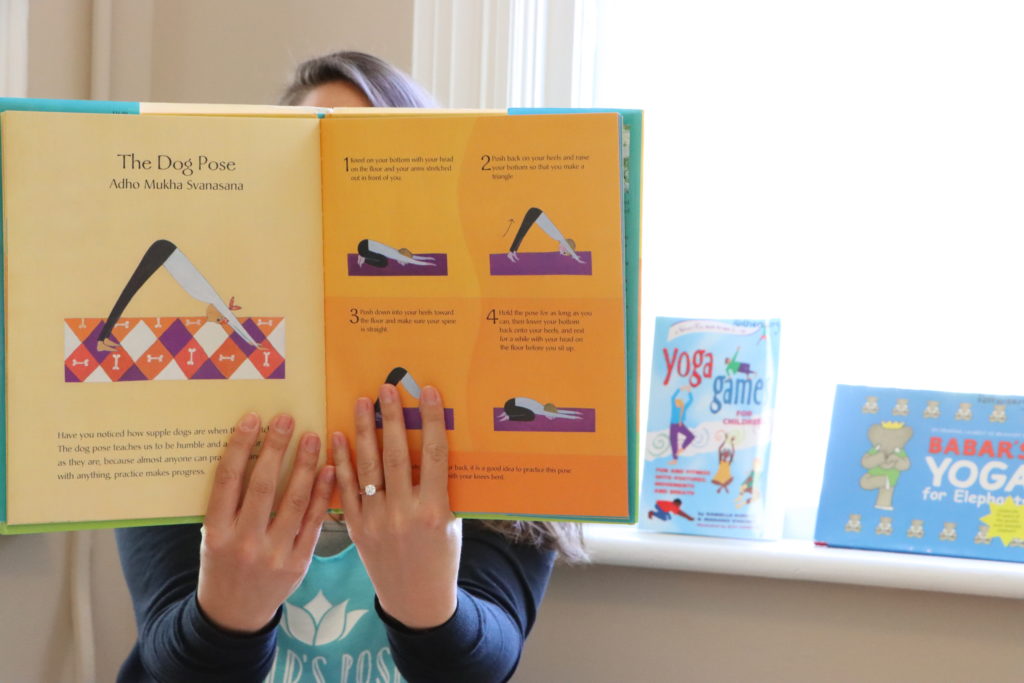In just a few months, our homes have transformed into learning environments, conference rooms, co-working spaces, yoga studios, and summer camps.
Living in this constantly changing environment is hard!
How we mindfully use the space and our time in that space is fundamental to the mental health and wellbeing of those who inhabit it—especially our children.
As a former Kindergarten teacher and founder of a children’s wellness company, I use movement and mindfulness to help my students practice skills to cope with and thrive in a constantly changing environment.
 I’ve taken some of my best social-emotional practices from the classroom and studio and adapted them for a home environment. Sometimes the smallest adjustments to space and routine can provide the biggest benefits down the line.
I’ve taken some of my best social-emotional practices from the classroom and studio and adapted them for a home environment. Sometimes the smallest adjustments to space and routine can provide the biggest benefits down the line.
Here are four simple ways you (and your child) can create a space for movement and mindfulness in your homes and in your routines:
1. Create a Designated Space for Mindfulness
When I was teaching, I called this space the “mindfulness corner.” Others may use the term “soft corner,” “cozy corner,” “peace corner” or any other creative variation of this.
The intent is that this is a designated safe space for your kid to go unprompted, at any time, to process big emotions, find strength during a difficult time or just escape from the noise.
Bring warmth to the space with blankets, pillows, soft lights, and stuffed animals. I encourage you to choose, design, and name this space with your child so that they feel equal owners of the space.
2. Fill it with Calming “Tools” for Your Kid
 A social-emotional or wellness toolkit provides resources for your kid to self-soothe and self-regulate while in this space. Some home tools may include:
A social-emotional or wellness toolkit provides resources for your kid to self-soothe and self-regulate while in this space. Some home tools may include:
- smooth stones
- squeeze balls
- homemade playdough
- a sand timer
- pipe cleaners
- straws
- yoga dice or cards
- mirror
- printed coloring pages (mandala coloring pages are great!)
- headphones with calming music
- a mindfulness jar (a mixture of glitter and water in a mason jar)
- books
We introduce these resources in our wellness classes, but your child might have some other ideas about what they need to feel safe and calm. Ask them about some of the familiar tools from their classroom and try to incorporate them into the toolkit.
 3. Name The Big Feelings
3. Name The Big Feelings
For educators and parents—this is a big one.
We know that sometimes big feelings present themselves in different forms: “My stomach hurts,” “I don’t want to,” “I’m bored.” What your child really might be saying is “I’m scared,” “I’m sad,” “I’m untethered.”
Give your child the names for big feelings and name them together when you see them.
Talk about how these feelings look and feel in your body. A hand mirror or face-cards are a great way for children to begin to recognize this mind/body connection.
Have a photo session with your child to model different emotions and create your own “big feelings cards.” Put it in their toolbox!
4. Build A Routine of Movement and Mindful Reflection
 When the world feels wobbly, routine is a great way to find that balance.
When the world feels wobbly, routine is a great way to find that balance.
Five or ten minutes of movement to start or end each day is one way to introduce healthy habits into your home routines. Throw on some music in the morning and start moving!
Invite your child to join you for a virtual yoga class, or turn it around and invite yourself to theirs! Child’s Pose Wellness and other virtual kids yoga studios offer a range of online kids classes targeted for children (and their grown-ups!) of all ages.
By incorporating a regular practice into your home, your child not only receives the immediate benefits of the practice, they build life-long skills to take off the mat and into the world.
The best part is that you can do this anywhere! No supplies required!
 Put It Into Practice
Put It Into Practice
To get a headstart on bringing movement and mindfulness into your home, check out Child’s Pose Wellness’s online kids wellness programs. We talk about these themes and more in all of our classes available at childsposewellness.com.
Sarah Rothenberg, M.Ed., is the founder of Child’s Pose Wellness, an organization committed to bringing movement and mindfulness into the lives of all children through a wellness curriculum designed for home and school. As a former public and private-school kindergarten teacher, Sarah saw first hand the transformative effects that yoga, mindfulness and a strong social-emotional foundation had on her students. Child’s Pose Wellness was born out of the belief that all children will be stronger mentally, emotionally and physically if they have access to daily movement and mindfulness.
Child’s Pose Wellness virtual classes are rooted in this mission and designed to give children tools they can practice on the mat and carry off into the world.
Visit www.childsposewellness.com to register for online summer movement classes for kids and teens.

